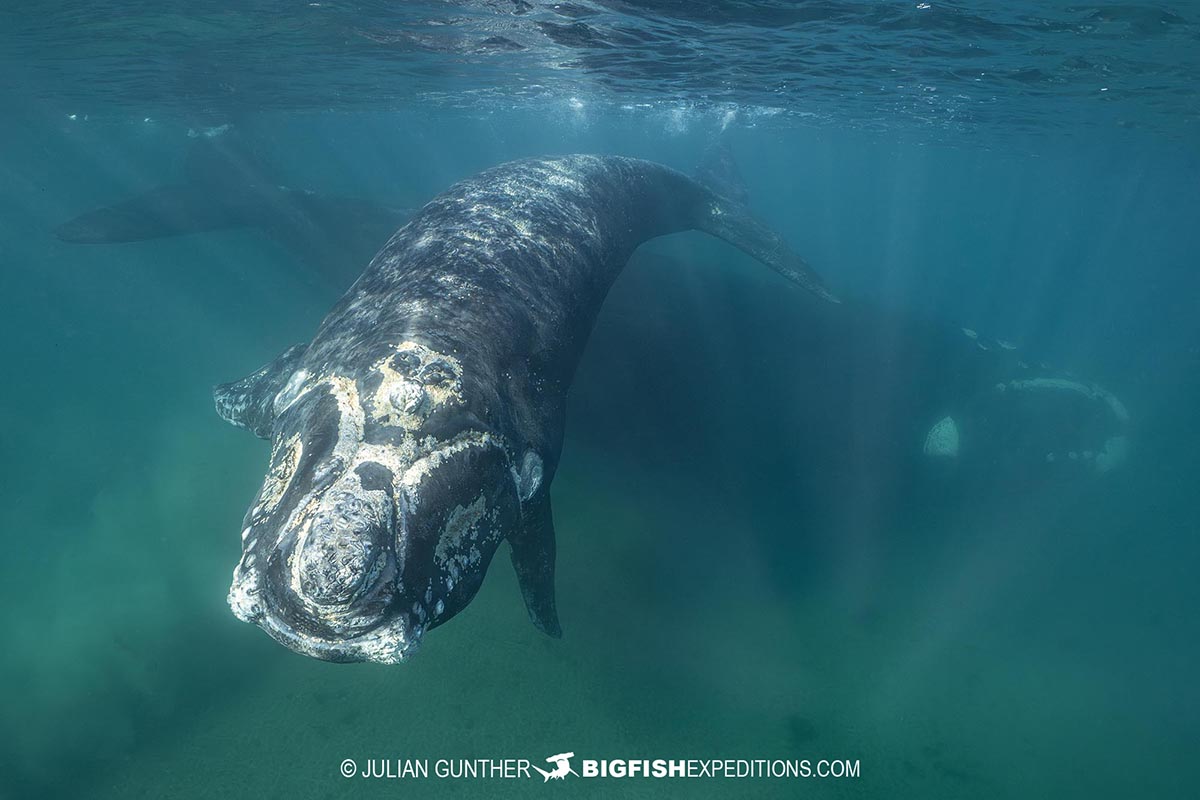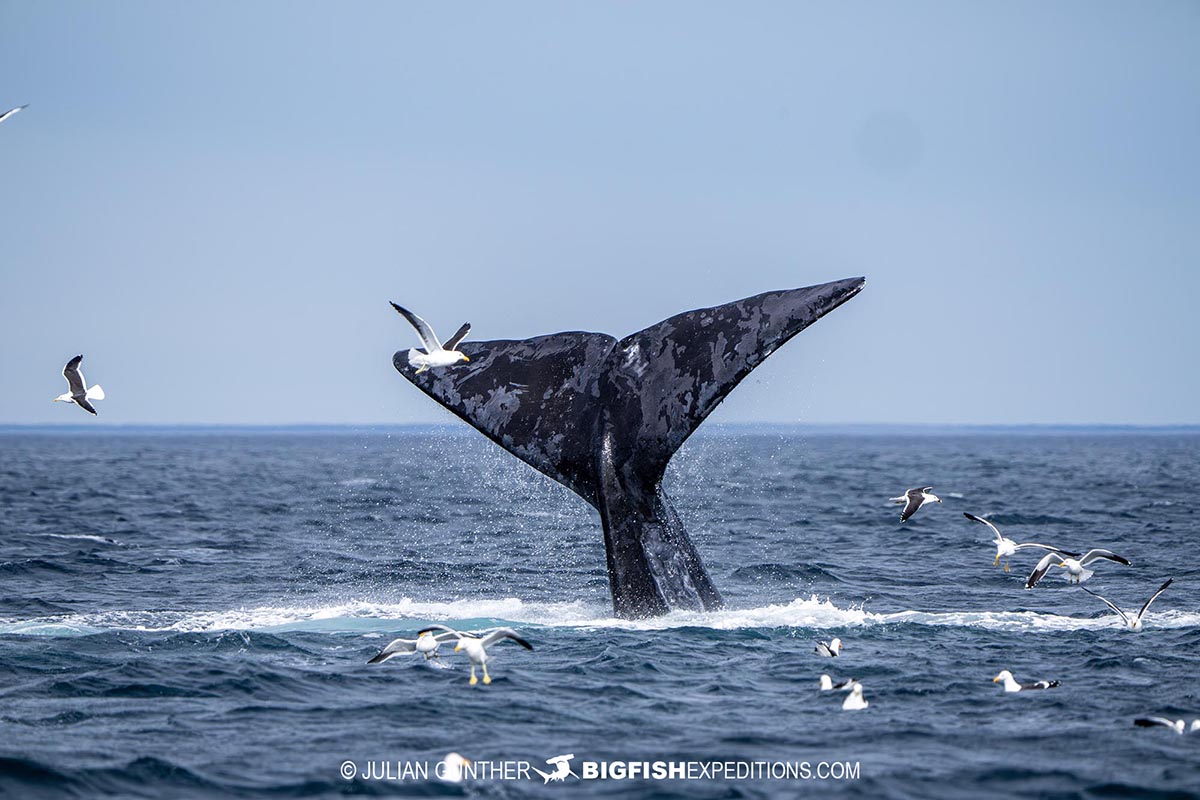A Big Fish Expeditions Trip Report
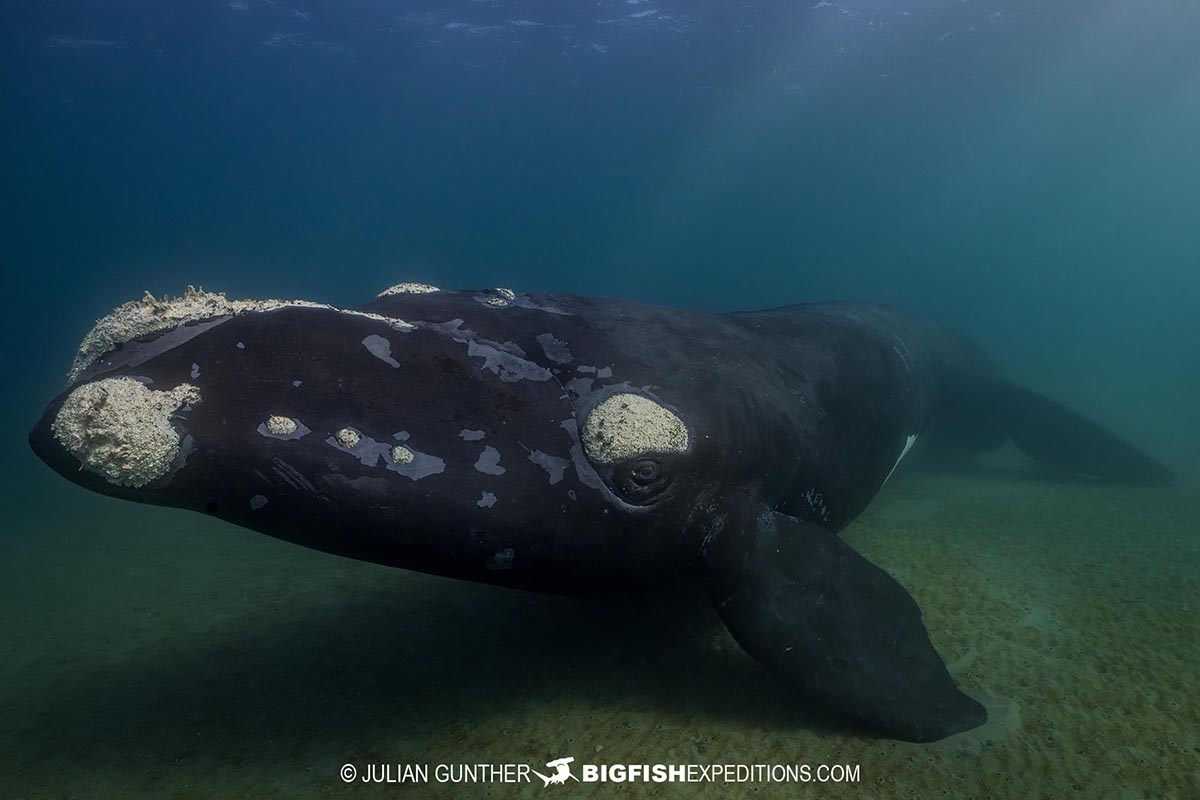
The perfect environment for Southern Right Whales
On August 8th, we once again returned to that near-mythic stretch of land known as the Peninsula Valdes to dive with and photograph/film Southern Right Whales. The Peninsula is one of the only sheltered areas along the South American coastline and the only spot with a combination of cool waters and protected bays, the perfect environment for Southern Right Whales to give birth and wean their young. Every year hundreds of whales return to these waters to carry out the cycle of rebirth that has been going on for a millennia.
Text and all images are from our Southern Right Whale Trip Leader Julian Gunther
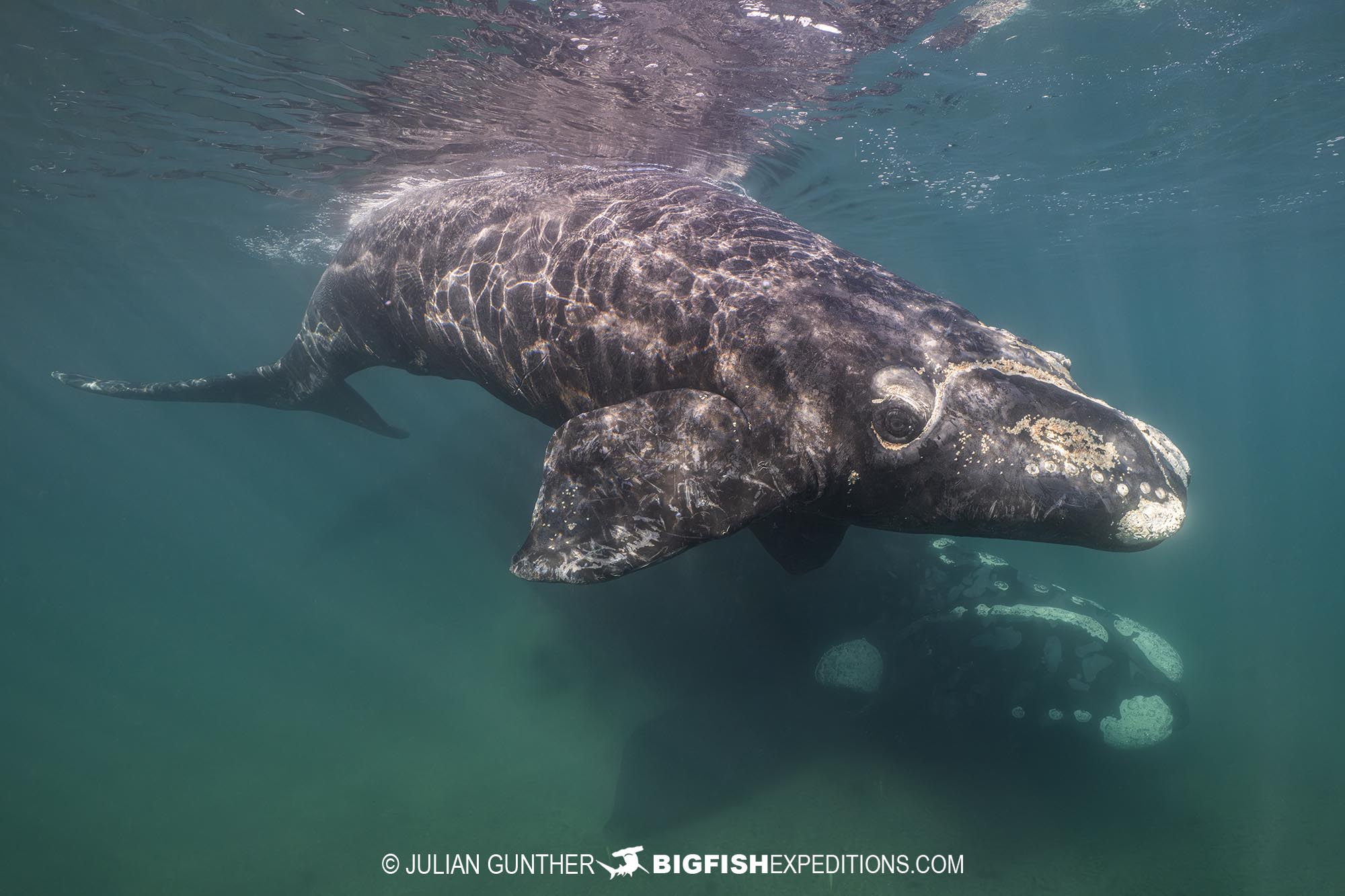
A Unique Opportunity!
Big Fish Expeditions is fortunate to each year be able to bring several professional photographers to the Peninsula’s waters to film and photograph these majestic whales, under special professional photography permits and with the watchful supervision of Argentine authorities.
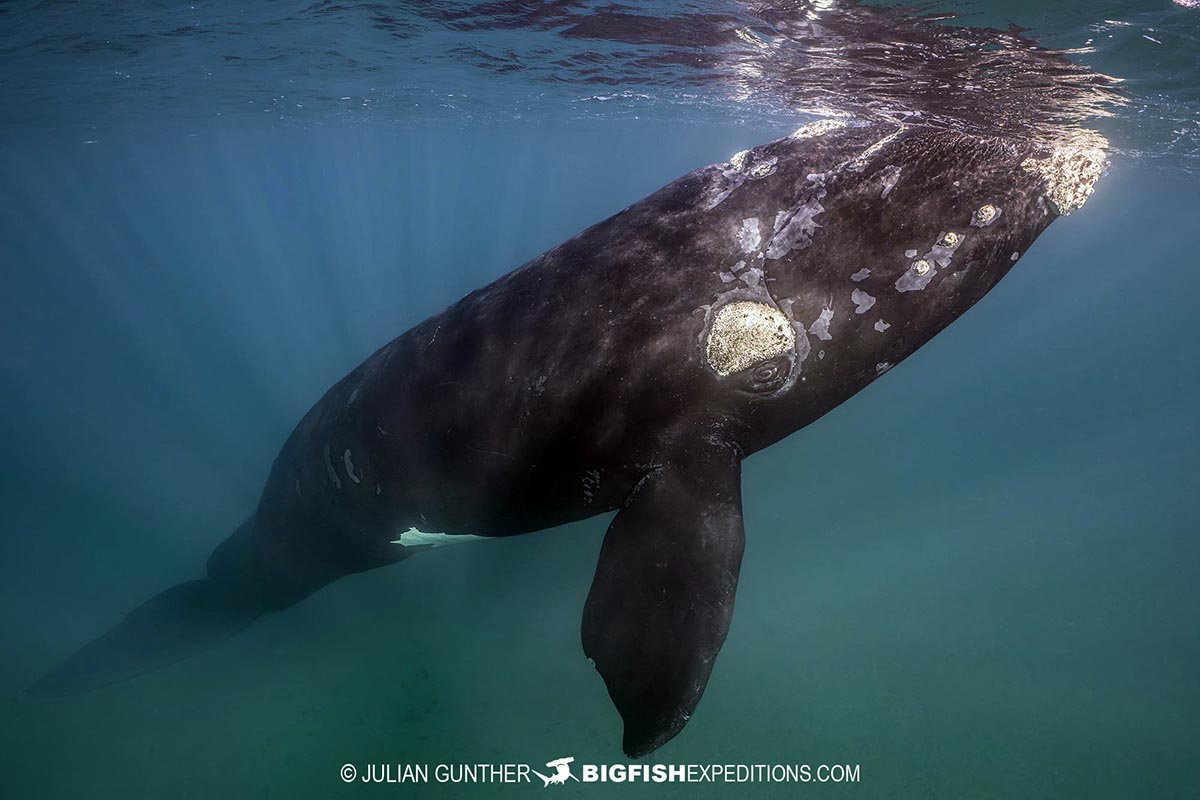
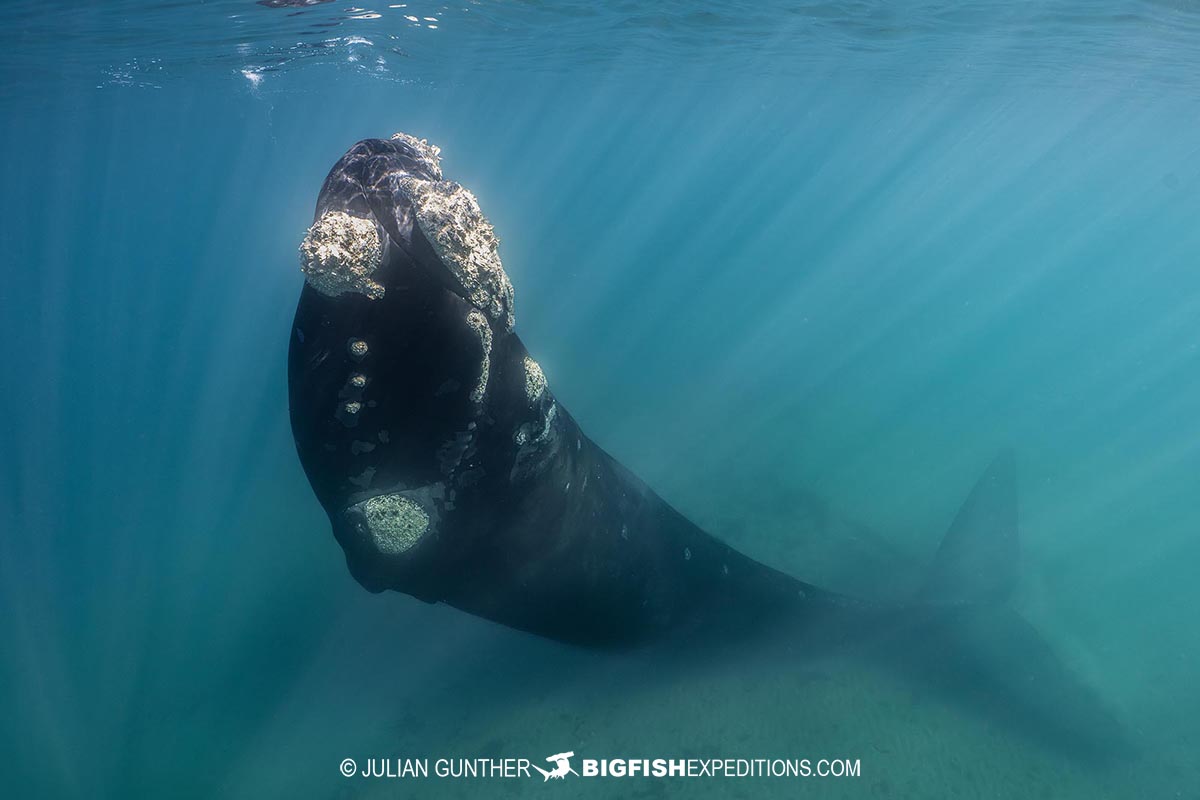
Instant Whales
Our first day, August 9th, began with a briefing at breakfast before heading down to the dock to begin our five-day excursion. Unfortunately the swell forecast showed unfavorable conditions building in the afternoon, so we had already planned for a half-day session. The guests were immediately in awe as we past at least five pairs of mothers with their calves before we even left the protected bay near our village. As it was high tide during our departure, we were able to shoot the local South American Sea Lions that form a small colony at the mouth of our bay. We headed north to slightly more sheltered waters to extend as much time as possible before conditions go too rough. The group had no trouble immediately finding several juveniles who showed interest in our large, comfortable boat. Regulations dictate one photographer at a time, with a safety diver, when shooting the whales. As everyone had significant water experience, it didn’t take long to settle into a routine. As one person was ascending the dive step, the other was slipping into the water. Thankfully, visibility underwater was also in our favor, so we immediately had sociable, curious whales and good underwater visibility. That kept up for about 4-to-5 hours before the white caps started to show and we needed to return to the safety of port. One the way back, everyone commented on how already the trip had exceeded expectations. As fortune would have it, it was also a full moon that evening, so we had a special treat as our backup. We returned to our hotel, showered and cleaned up and then hopped into our shuttle for the 1.5-2 drive to Playa Doradillo. Playa Doradillo is a special beach located between Puerto Piramides and Puerto Madryn, with a very steep drop from the waters edge. It makes it sketchy for humans, but allows the whales to come almost within touching distance of the water’s edge. Image a 40ft (12m) whale and its calf, within the distance of walking down to most people’s mailboxes. We stayed on the beach, observing and photographing the whales through sun down and the following a spectacular rise of the full moon. Although the dark conditions made it difficult to photograph, it was still an exhilarating sight to see whales cruising the shoreline while reflected by bright moonlight.
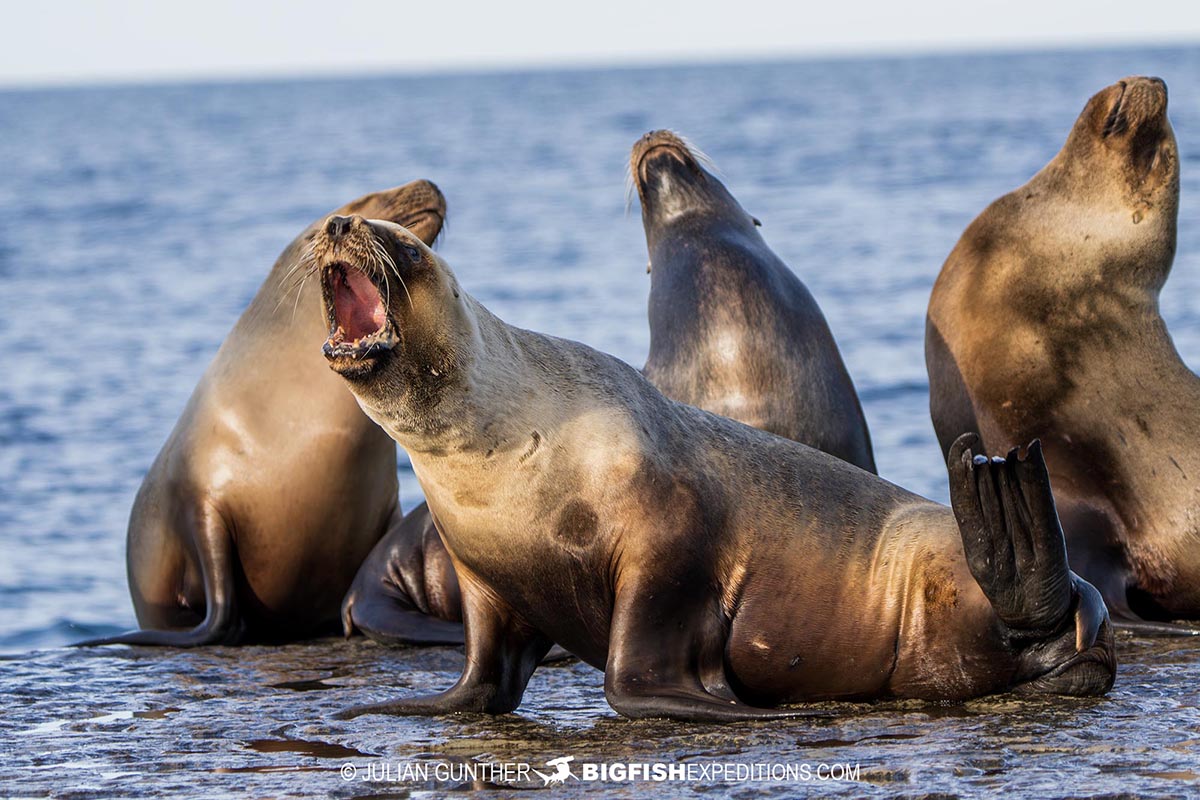
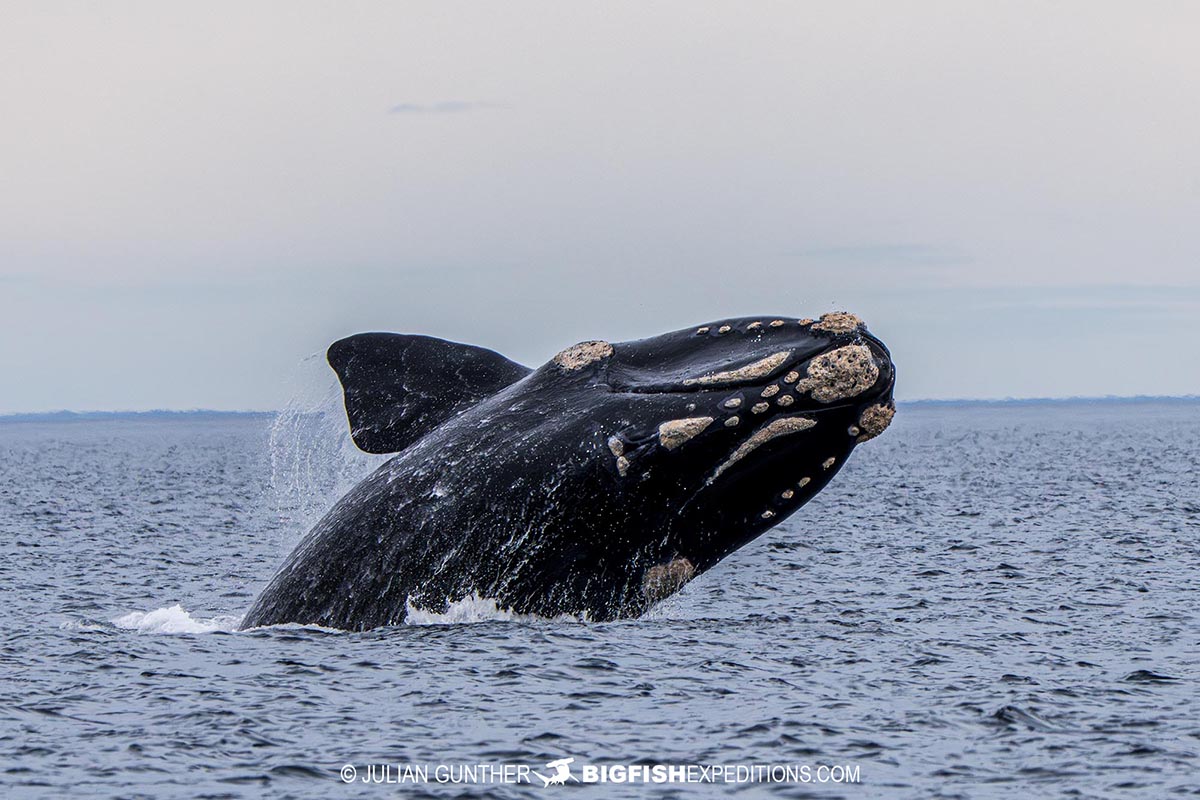
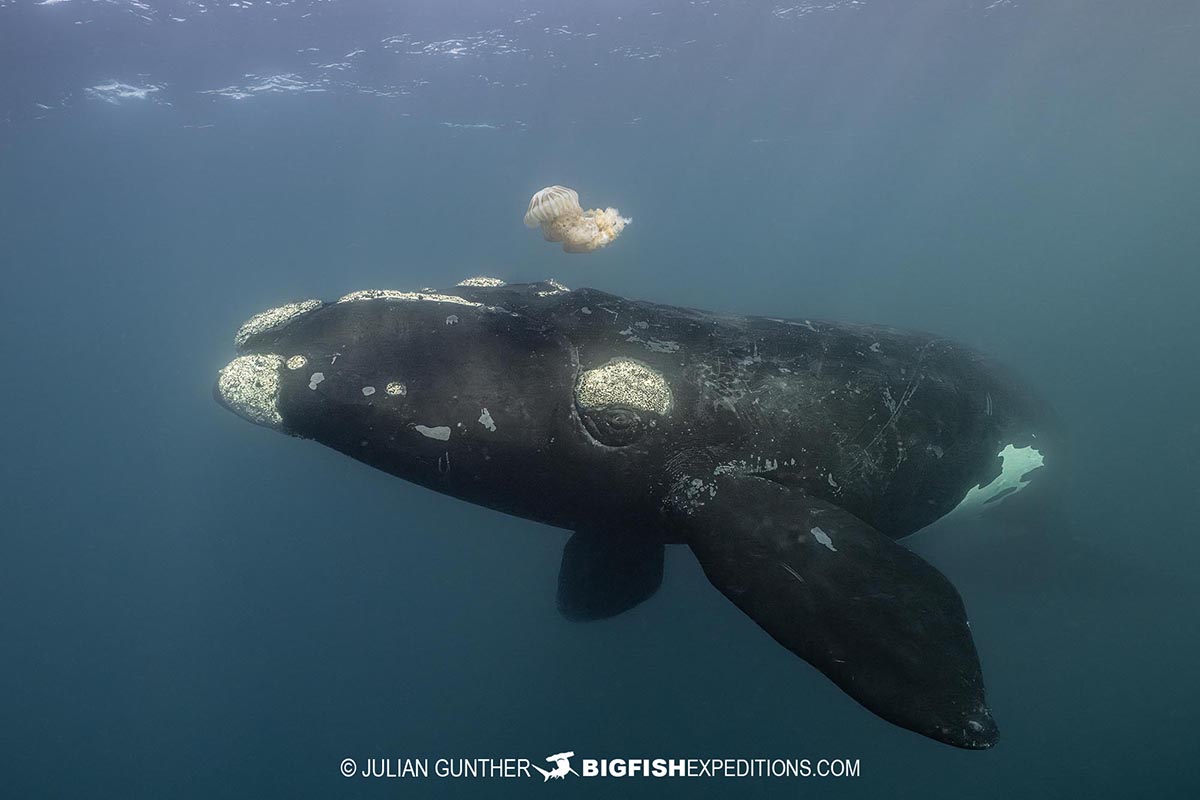
Excellent Conditions for Snorkeling with Southern Right Whales
Fortunately, the forecast was only for rough seas at night, with them then settling again the next morning and remaining that way for several days. We were blessed with an accurate forecast and we headed out to sea at our regular hour, under clear skies and calm seas. Once again we stopped off for a quick “good morning” to the Sea Lions before continuing to find whales to photograph. We headed south this time as conditions were almost perfect and found numerous whales. Our dive rotation that had been established the day prior went off with the precision of a Swiss watch (which was good since we did have some Swiss photographers on our boat!). Visibility underwater was mostly great during the day, but occasionally we hit some pockets of shallow water where the whales had stirred up the seabed. It is a wonderful problem to have when you have whales in such shallow water that sometimes you have to wait for the sediment to dissipate before you can shoot them from the seafloor again. As an added bonus, we had several frisky calves who wanted to show off their breaching prowess, so just because you weren’t in the water didn’t mean the shooting opportunities were over. Another wonderful habit of Southern Right Whales is they often breach in a sequence. So if you miss the first one, just aim to the left or right of where it impacted and wait, there will often be three-to-seven more breaches in a short period of time. The water temperature was of no consequence to any of the guests as the adrenaline of having so many whales and good conditions was enough to offset even the faintest hint of a chill. Towards the end of the day we even encountered a heat-run, with several males competing to mate with a female. Most of our photographers were able to experience the heat-run from underwater, which is a very rare encounter for even the most seasoned whale photographers. That encounter wrapped up day three and we headed back to shore again in the late afternoon, but for a quick turnaround, as we would be going almost immediately back out to shoot tailslaps, finning, spyhopping, breaches and whatever else at sunset. Those Patagonian sunsets are something special as the sky lights up in iridescent hues of orange, red, purple and blue, while streaks of cirrus clouds further accentuate the scenery. Once the light was gone we returned to port to download shots and recharge cameras and photographers to another day.
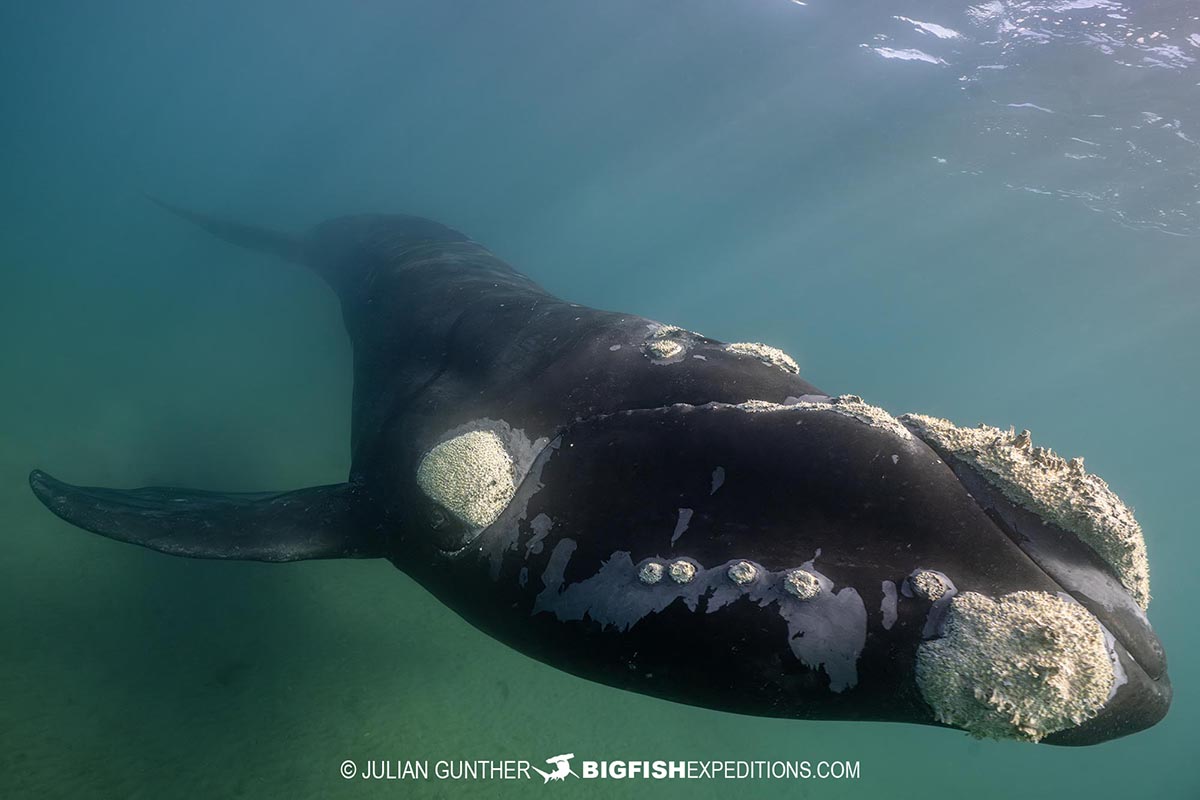
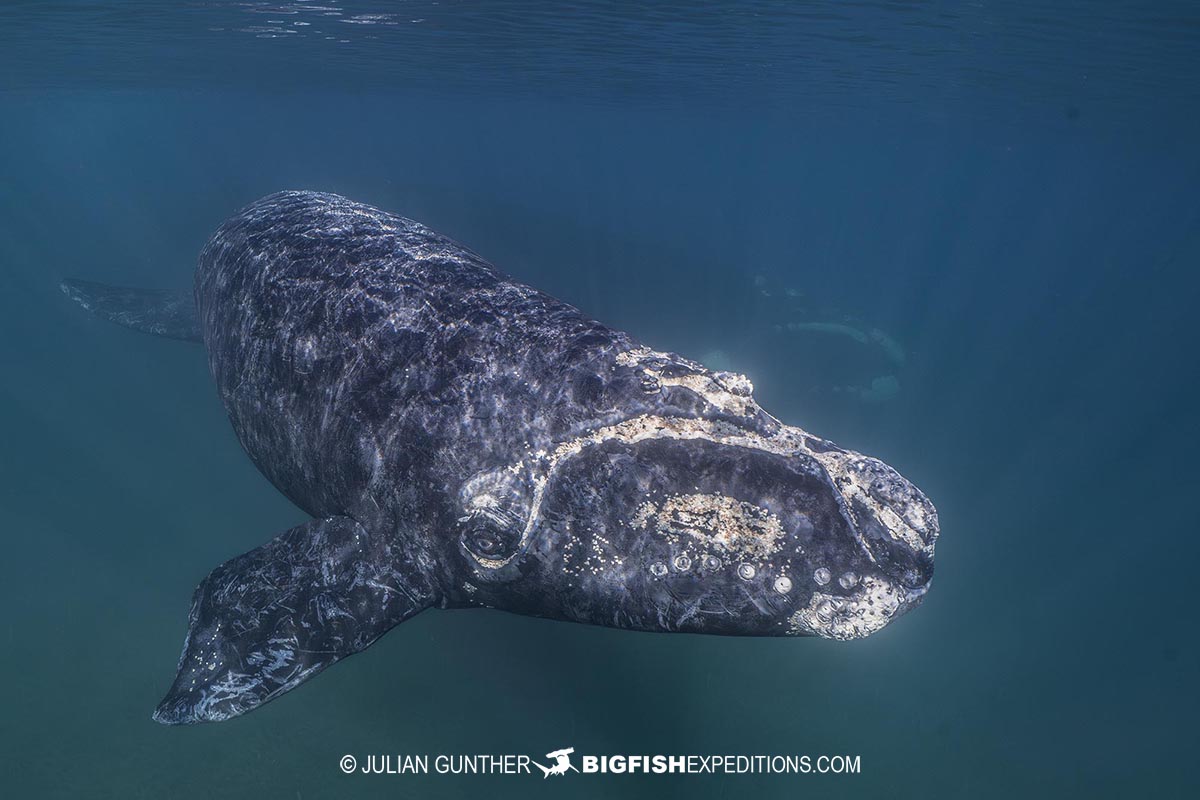
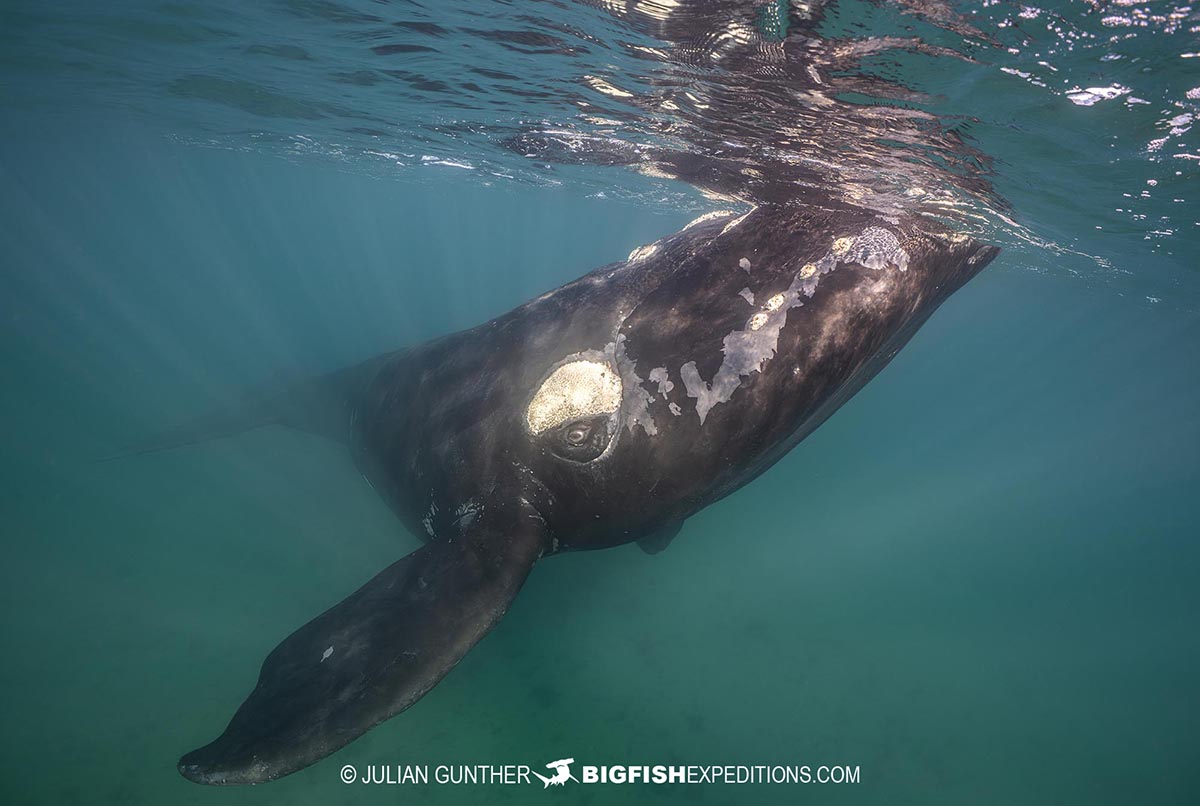
Consistent Whales and a fleeting White Calf
Day three was more of the same, but no one complained! Calm seas, good visibility and a bit more cloud cover, but not enough to negatively impact underwater visibility. Once again our dive rotation fired off without a hitch. After about two hours one of our guides signaled he had spotted a rare, and much-coveted white calf!!! We motored over in its direction, but unfortunately the calf and its mother weren’t in a very sociable mood. They kept just out of visibility range no matter where we were positioned. I was able to jump in on a “hot drop” and swim like hell to get some “proof of life” shots, but there weren’t going to be any National Geographic covers this time! Thankfully everyone got to see the little rare calf from at least topside before we allowed it and its mother to go off in peace. The day continued on with several juveniles and a couple of mothers with calves that all showed some level of interest in our divers. Towards the end of the day we made a friend, or so this whale was dubbed by everyone onboard. Southern Right Whales got their name from their tendency to swim up to boats out of curiosity, and thus whalers dubbed them the “right” whale to hunt. Thankfully that activity no longer occurs, but their curiosity remains. This particular individual was no exception. It immediately swam straight at our boat and would actively come over to swim with and observe our photographers. It is difficult not to anthropomorphize animals when they behave this way, but we did, and we talked about how he was bored with other whales and was really curious about their uncoordinated and skinny sea lions he was encountering (us). It would be difficult to sum up any single encounter that defined the trip, but this was definitely at the top of the list. This whale would follow divers back to the boat when it was time to change the rotation and eagerly await for the next diver’s entry. It reminded me of my German Shepherd when I come back from a trip. Everyone loved our “little” friend and it was heart-breaking when the time came to head back to shore. We even lingered for a bit as our newfound friend was spyhopping at the back of the boat, seemingly hopping we would change our mind. Alas, we had to leave and wish our new friend the best and hope for one more encounter before the end of the week.
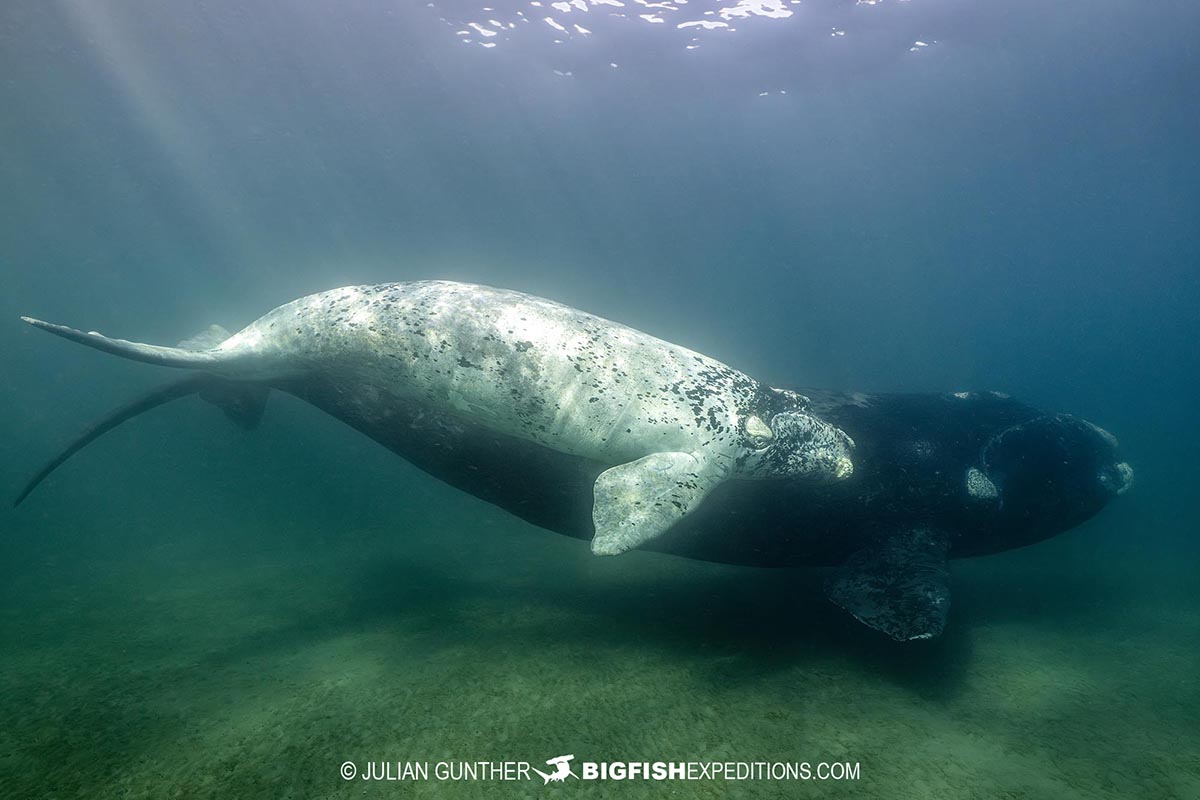
Land-Locked on Peninsula Valdez
Unfortunately the forecast for day 4 was bad and it lived up to expectations. Its not often you see white caps almost upon a protected shore, but they were visible as far as you could see on the ocean. Thankfully we had already counted on this and made arrangements to go on a tour of the Peninsula to see the terrestrial wildlife and some of the other aquatic inhabitants. As we headed out we saw large groups of Guanacos, which are like hairy llamas, but closely related to Camels. They are the dominant herbivore on the peninsula. We also saw several Rheas, which look like Ostriches, but they were only visible from a distance and were moving away. In addition we encountered Patagonian Maras, which look like a cross between a Capybara and a Rabbit. We made our way north, towards Punta Norte, on the far northern tip of the Peninsula. Punta Norte is famous for its Sea Lions, and the Orcas that hunt them. The Orcas of the Valdes Peninsula are world-renowned for launching themselves upon the beach and plucking unsuspecting pups right out of the surfbreak or sometimes even the sand, before wriggling back into the water. Our professional photography permits allowed us to go down on the beach, with our government-guide, to get a closer look at the Sea Lions and to see the exact spots where the Orcas most commonly attack. Unfortunately the Orca-Sea Lion hunting season is typically only in March and April, which is when the pups are beginning to try and become water-proficient. As we were about to depart Punta Norte someone shouted “Armadillo”! It sounds rather ridiculous to have so much excitement and joy from photographing a Hairy Armadillo, endemic to the Peninsula, but they have a quirky disposition and will often come straight at the camera or completely disregard your presence. The photos of them are almost secondary to the experience and every was very happy to encounter these little mammals before we left. After exploring Punta Norte we head southeast towards Caleta Valdes, to check out another Orcas hot-spot, this one where they hunt Southern Elephant Seals. For Orcas, hunting Sea Lions is risky as they have sharp canines and are agile; however, hunting Southern Elephant Seals is a whole other endeavor as they can rival the size of some of the smaller Orcas. Once again we were able to see the channels and inlets where the Orcas hope to pluck unsuspecting Elephant Seal pups off the beach. As a bonus, there were several early arrivals and we got to see some juvenile males practicing their fighting for when the greater population begins to arrive in September. We then worked our way back to our hotel, for our final day on the water and it was forecast to be a good one.
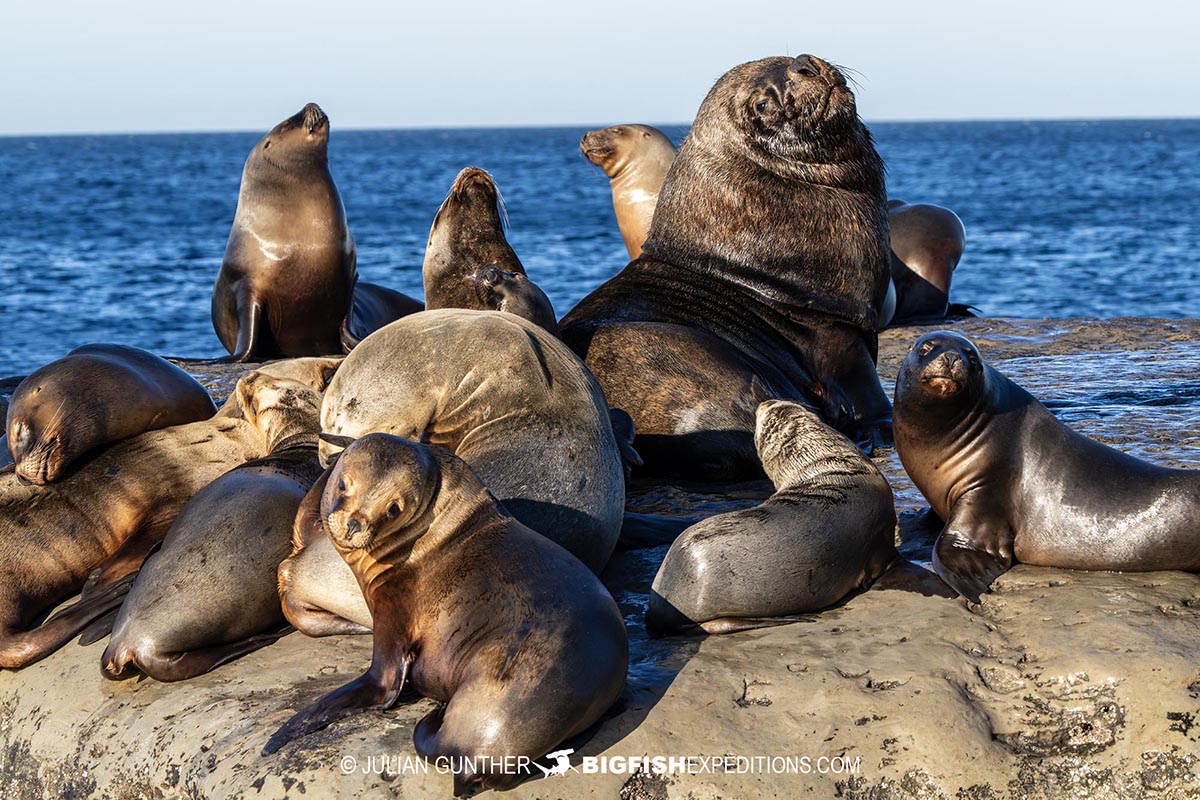
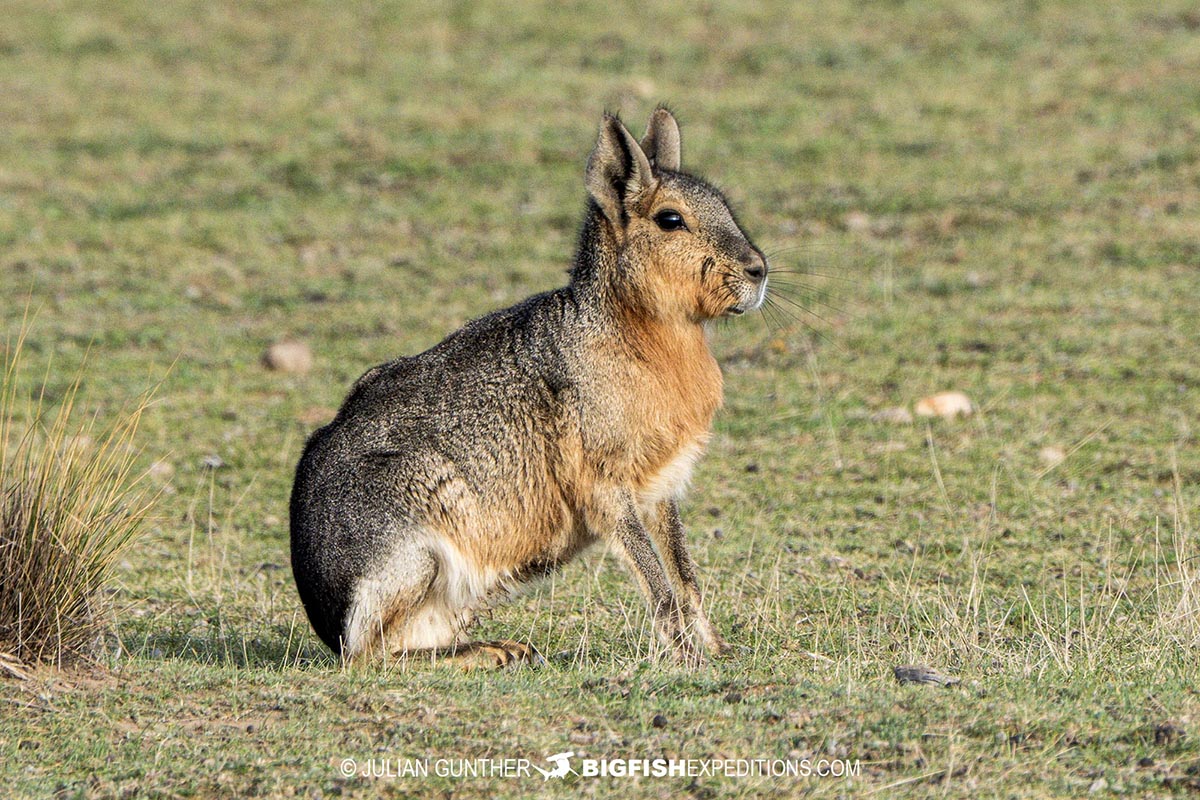
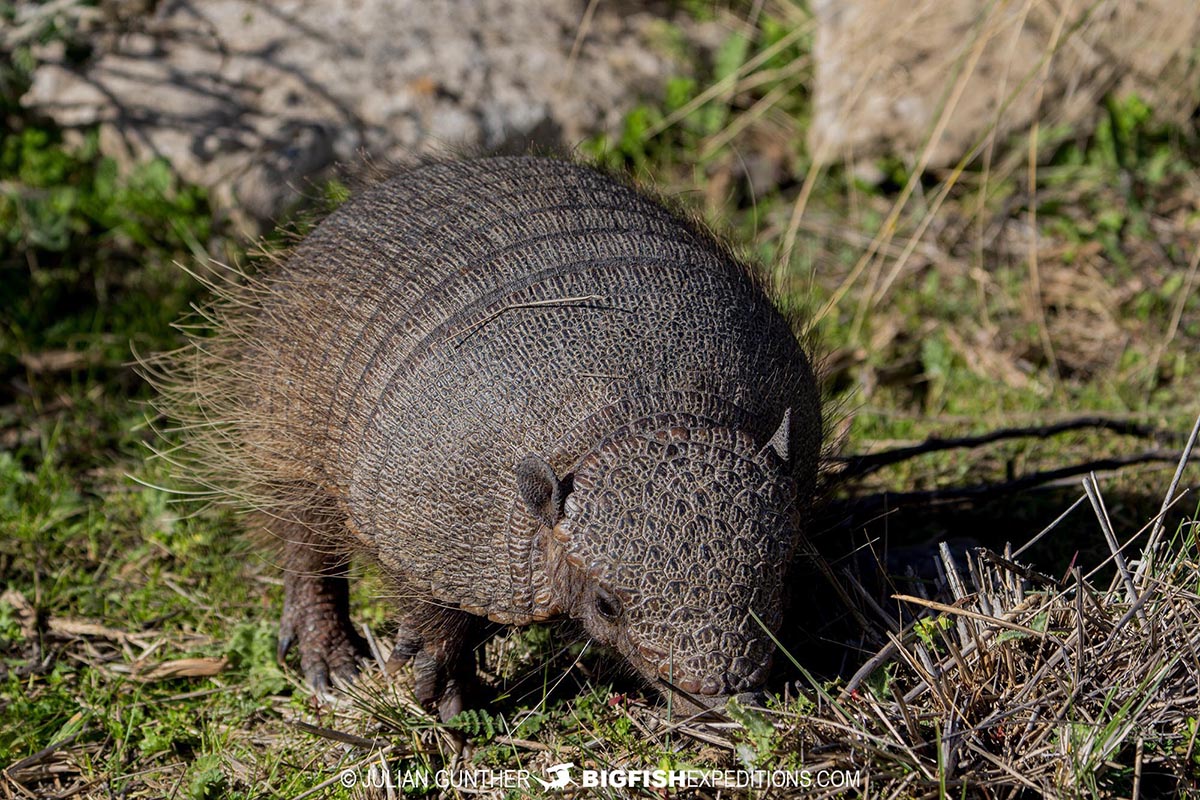
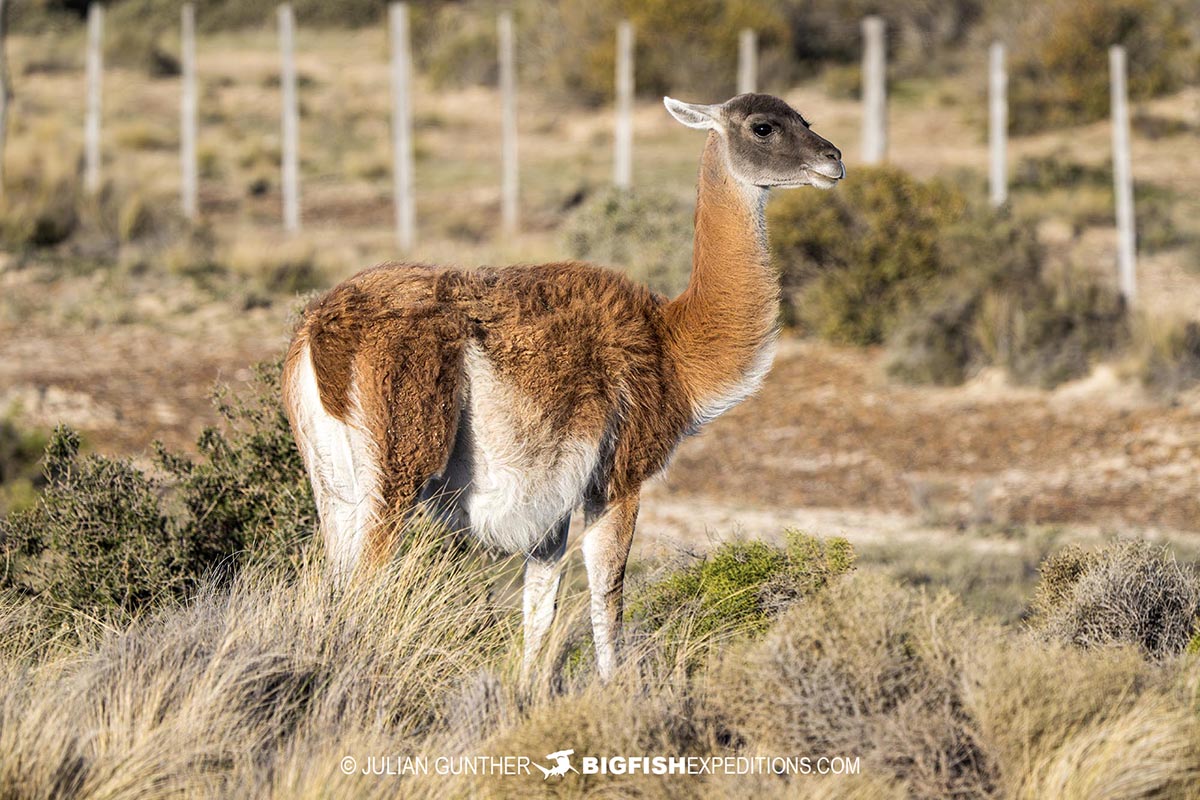
An Epic Last Day Photographing Southern Right Whales
Sure enough, conditions and forecast held and we headed back our for our final day, under slightly overcast skies, but calm seas. We went out looking for mothers and calves along the southern part of the bay and encountered several, but unfortunately they weren’t in a very playful condition. Most would do 2-3 passes and then continue about their way. After many attempts we changed course and went looking for juveniles and quickly came across several slightly older individuals that seeming willing to engage. Again, our rotation was spot-on, and photographers were able to try all kinds of new shots and angles, especially since most had gotten the shots they originally wanted and were feeling more comfortable around the animals. The visibility held out underwater and as the sun rose higher, it cleared most of the clouds and again conditions lined up. Several juveniles swam right up to the photographers and seemingly posed from the camera, sometimes from only 3ft (1m) away. As I joked on the boat, “if you didn’t get that shot, give me your camera, you’re done.” We continued working on getting those creative shots or working on (maybe) getting a better shot or angle then the one we took earlier in the week. As the light got softer and softer, everyone acknowledged the expedition was coming to a close. When the final decision was made to head back to port, it wasn’t a time of sadness as our group had told me their expectations were high, but this blew them clear out of the water.
As an added bonus, we informed our guests we would be having an “assado” or Argentinian BBQ, that evening. Argentina is also famous for its food and wine, and there was plenty of both on this occasion. Typically these events can turn into fun and rowdy affairs, but due to Aerolinas Argentinas’ unfortunate timetable, we all had an early flight the next morning, so we had to temper ourselves! But it still didn’t matter as most people went to bed with a belly full of delicious food and minds (and memory cards) full of amazing experiences.
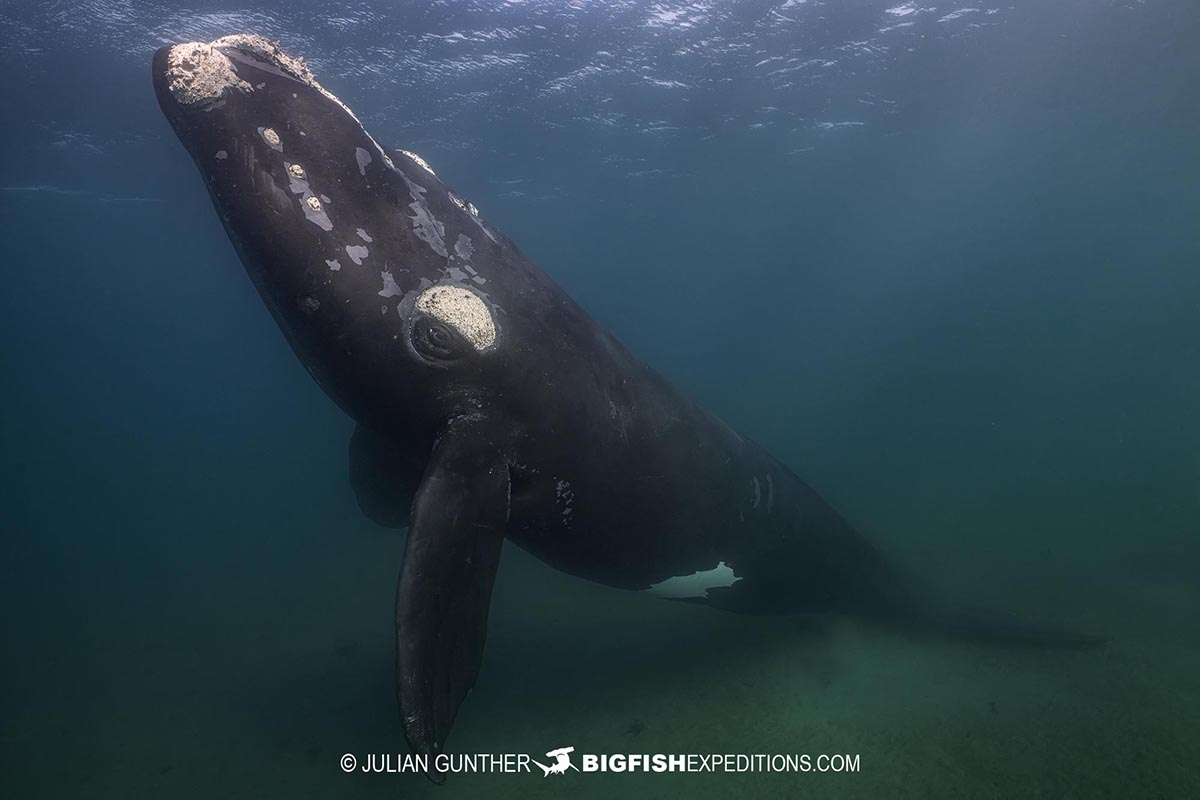
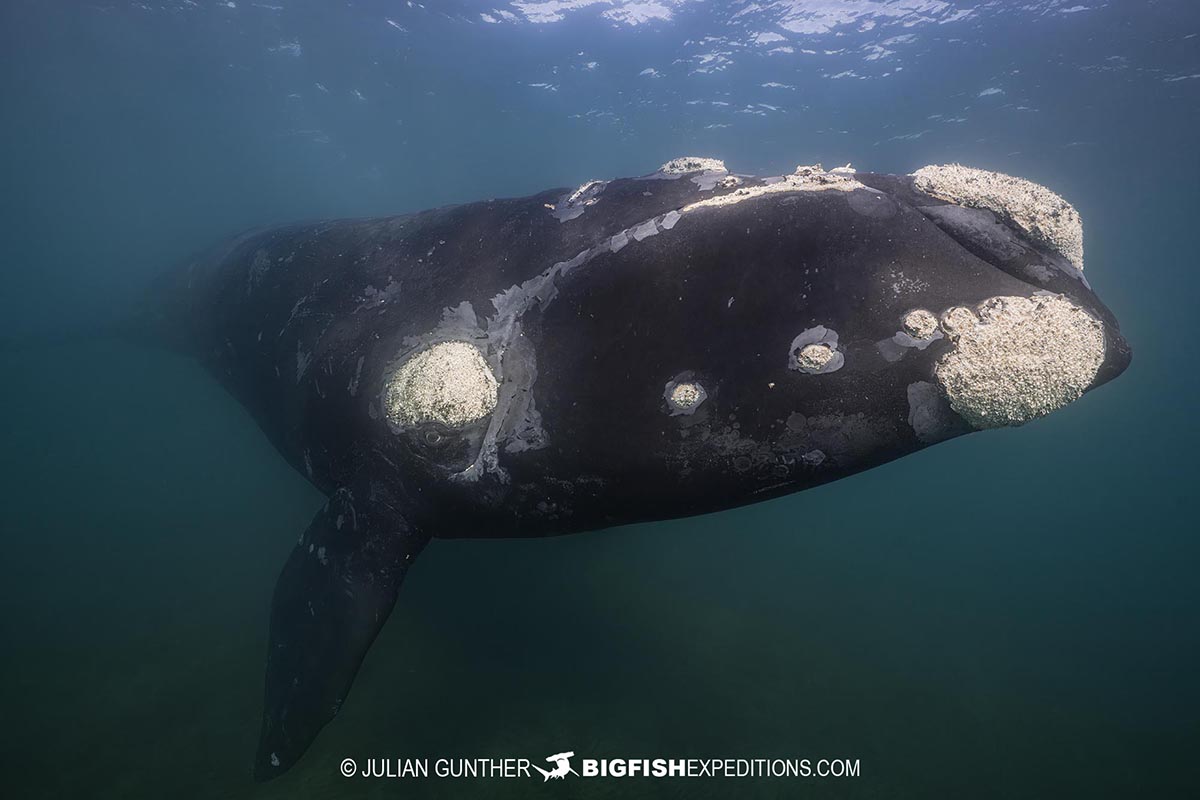
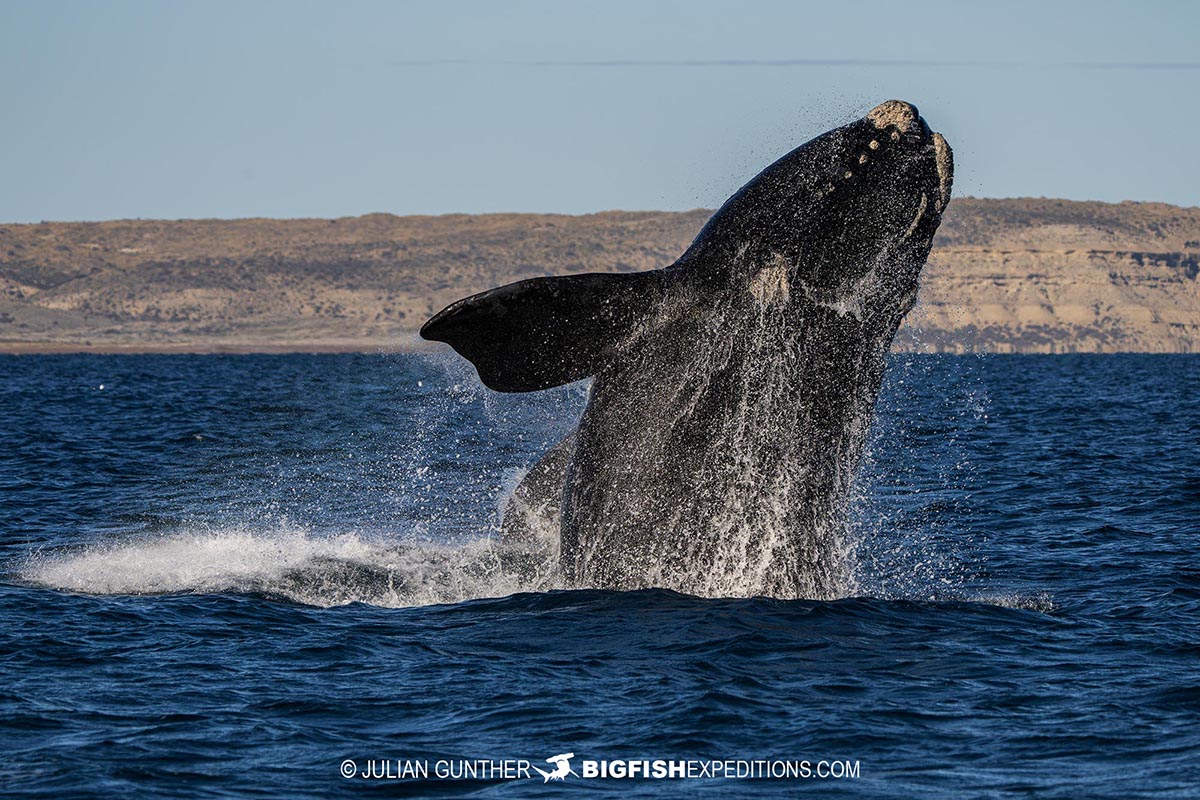
Rebounding Population of Southern Right Whales
As a follow-up to our trip, five days after the conclusion of our expedition, on August 19, I was informed by local researchers that they had concluded their first aerial survey of this season’s Southern Right Whale population and the results far exceeded expectations. A total of 2,110 Southern Right Whales were counted in August, in Peninsula Valdes. That included approximately 826 mothers, 826 calves, 381 solitary individuals and 77 mating individuals. The 2,110 figure is highest level to date and a significant increase over the 1,600-1,700 individuals estimated at the end of the 2024 season.
Our trips are designed for professional photographers and are conducted under special permit. During our trips in Patagonia, our small group of 4-5 guests (plus our guide) are the only people legally allowed to snorkel with Southern Right Whales in all of South America. We feel very lucky to have this very special privilege!
